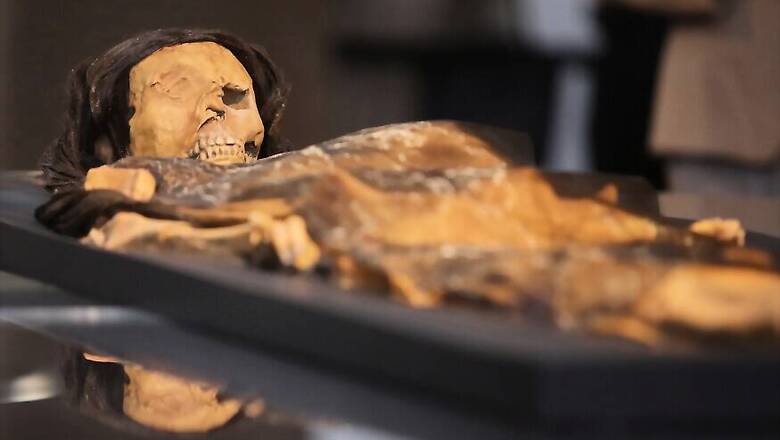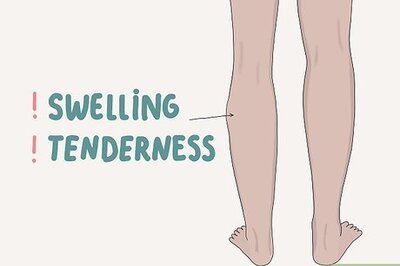
views
Cairo/Boston: Using cutting-edge technology, the FBI has solved a century-old archaeological mystery of the identity of a 4,000-year-old Egyptian mummy, after extracting DNA from its tooth.
Since 1915, when the severed head of a mummy was discovered in the corner of a looted tomb in the ancient Egyptian necropolis of Deir el-Bersha, archaeologists have puzzled over its identity. Despite deciphering that the tomb belonged to a governor named Djehutynakht and his wife, they have long deliberated over whose head it was.
"We never knew whether it was Mr Djehutynakht or Mrs Djehutynakht," CNN quoted Rita Freed, a curator at the Boston Museum of Fine Arts (MFA) that has stored the tomb's entire contents since 1920, as saying.
Now, almost 100 years later, thanks to research by the Federal Bureau of Investigation (FBI) published last month in the journal Genes, they can definitively say the head was male and that it belonged to the governor himself.
For Freed, this not only marks the culmination of a century-old archaeological enigma but is also a testament to the technological advances in DNA testing, the report said.
"We now know the FBI has developed a technique to reconstruct the very most degraded DNA. If they can reconstruct DNA from a 4,000-year-old tooth, they can reconstruct it from just about anything," she says.
The sheer age of the head and the desert environment it was found in made it particularly difficult to extract DNA. As Odile Loreille, a forensic scientist at the FBI, explains, DNA degrades faster in hot conditions.
The damage endured by the mummified head made it even more difficult to analyse. It was found at the bottom of a 30ft pit, in a tomb that had been ransacked and robbed in antiquity. The looters had stolen most of the jewellery and precious metals, dislodging the couple's corpses in the process. The decapitated head was found on top of the governor's coffin.
Modern archaeologists damaged it further when handling the head during the various attempts at identification since its discovery, the report said.
In 2005, scientists at the neurology department of the Massachusetts General Hospital performed a CT scan on the mummy but was still unable to determine whether it was male or female. All the scan revealed was that certain cheekbones and parts of the lower jaw — features that could have held clues to the mummy's sex — had been removed in a highly skilled surgical procedure.
Researchers suggested this could have been linked to the ancient Egyptian "opening of the mouth" ceremony, which was intended to enable the dead to eat and drink in the afterlife.
Four years later, the hospital tried to test the head's DNA, by extracting its tooth — the part least likely to be contaminated, because of the protective enamel. But to no avail.
This is when the FBI came in — "a very unusual partner," Freed admits. The US investigation unit reached out to the museum, attracted by the unusual sample.
It was not so much the historical significance of the mummy that appealed to the FBI, but the scientific challenge it could pose, Anthony Onorato, chief of the FBI's DNA support unit, told the network.
The FBI saw the mummified head as an opportunity to practice extracting DNA from contaminated materials. "It's not like the FBI has a unit — like an X-files unit — that just does historical cases," says Onorato. "It's that we're actually trying to develop criminal procedures using historical items."
So, in 2016, the ancient dental crown was handed to Loreille, who has a successful track record of extracting genetic material from very, very old bodies, the report said. But even Loreille was not optimistic initially.
The forensic scientists drilled into the tooth, collected the powder, dissolved it in a chemical solution, ran it through a DNA copy machine and then a sequencing instrument. Once they had obtained the data, Loreille studied it, checking the ratios of sex chromosomes in the DNA sequence. From this, she could determine that the skull was male.
"I was very happily surprised," Loreille says, "we got lucky."




















Comments
0 comment